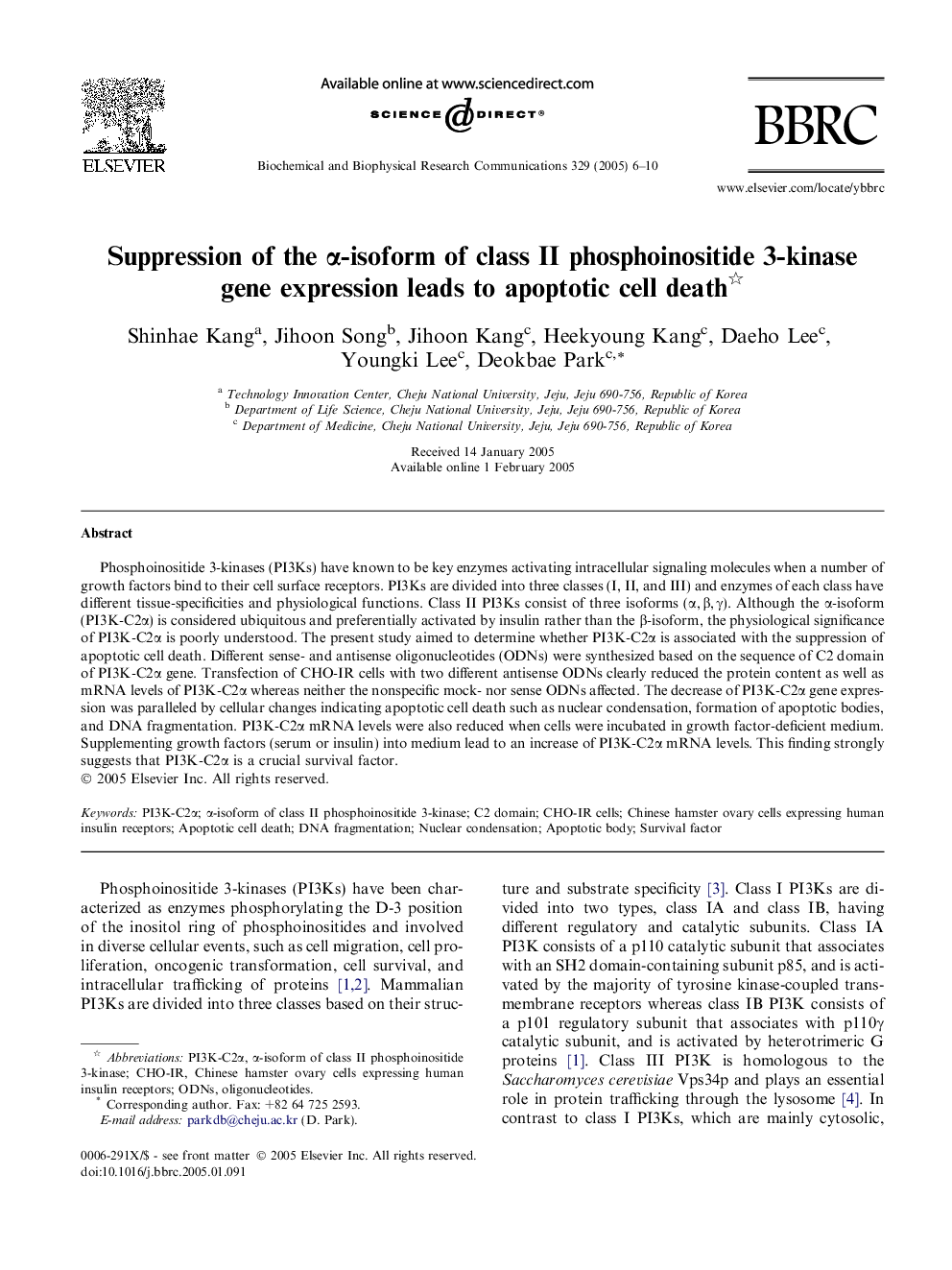| Article ID | Journal | Published Year | Pages | File Type |
|---|---|---|---|---|
| 10771700 | Biochemical and Biophysical Research Communications | 2005 | 5 Pages |
Abstract
Phosphoinositide 3-kinases (PI3Ks) have known to be key enzymes activating intracellular signaling molecules when a number of growth factors bind to their cell surface receptors. PI3Ks are divided into three classes (I, II, and III) and enzymes of each class have different tissue-specificities and physiological functions. Class II PI3Ks consist of three isoforms (α, β, γ). Although the α-isoform (PI3K-C2α) is considered ubiquitous and preferentially activated by insulin rather than the β-isoform, the physiological significance of PI3K-C2α is poorly understood. The present study aimed to determine whether PI3K-C2α is associated with the suppression of apoptotic cell death. Different sense- and antisense oligonucleotides (ODNs) were synthesized based on the sequence of C2 domain of PI3K-C2α gene. Transfection of CHO-IR cells with two different antisense ODNs clearly reduced the protein content as well as mRNA levels of PI3K-C2α whereas neither the nonspecific mock- nor sense ODNs affected. The decrease of PI3K-C2α gene expression was paralleled by cellular changes indicating apoptotic cell death such as nuclear condensation, formation of apoptotic bodies, and DNA fragmentation. PI3K-C2α mRNA levels were also reduced when cells were incubated in growth factor-deficient medium. Supplementing growth factors (serum or insulin) into medium lead to an increase of PI3K-C2α mRNA levels. This finding strongly suggests that PI3K-C2α is a crucial survival factor.
Keywords
Related Topics
Life Sciences
Biochemistry, Genetics and Molecular Biology
Biochemistry
Authors
Shinhae Kang, Jihoon Song, Jihoon Kang, Heekyoung Kang, Daeho Lee, Youngki Lee, Deokbae Park,
